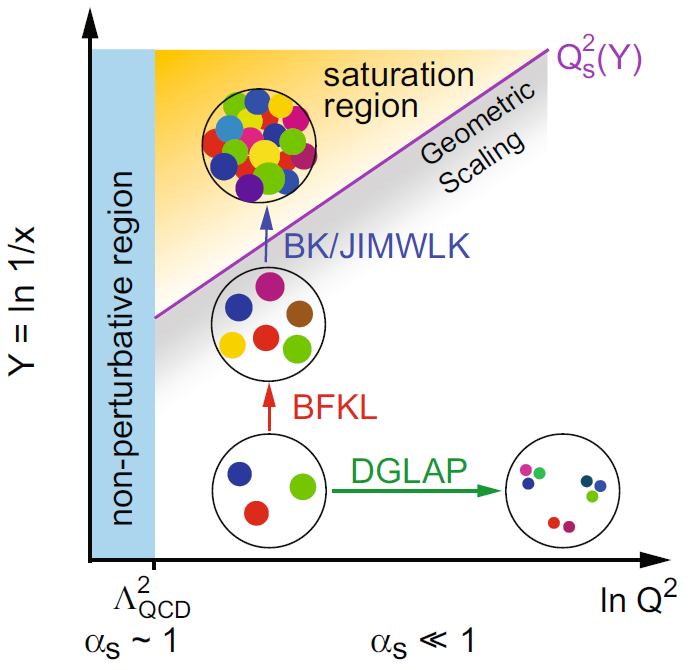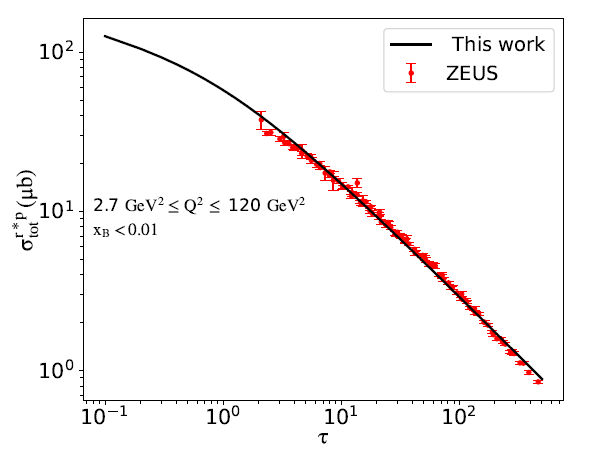Researchers Obtain New Analytical Solution to Quantum Chromodynamics Evolution Equation
A group led by Prof. CHEN Xurong at the Institute of Modern Physics (IMP) of the Chinese Academy of Sciences (CAS) has recently made new progress in the study of quantum chromodynamics (QCD) evolution equations and the gluon condensation. The results were published on March 12 in Physical Review D.
The distribution of partons (quarks and gluons) in protons and nuclei is essential for understanding many high-energy physical processes, as all studies on high-energy physical processes involving protons and nuclei require the function information of partons distributions.
Since the distribution of gluons cannot be measured directly by electrons probe without charge, the partons evolution equations, which are basic in QCD theory, are the powerful tools to extract quarks and gluon distribution functions from experimental data. The electron ion colliders (EIC), which are being proposed in China and abroad, will offer precise measurements of partons distribution functions in nuclei to test various QCD evolution equations.
For the first time, the researchers at IMP have successfully applied the "homogeneous balance method" to the QCD evolution equation and obtained a new analytical solution of the Balitsky-Kovchegov (BK) evolution equation.
"The BK equation is a complex QCD evolutionary equation, and its analytical solution is essential for the study of gluon condensed physics,” said Prof. CHEN Xurong.
Then researchers obtained the saturated energy scale of the gluon, and finally gave the geometric scale law, which revealed the law of the color glass condensed (CGC) matter in the high energy region.
This progress not only promotes our understanding of QCD theory and the CGC states, but also provides theoretical support for the electron ion collider projects.
This work was supported by the pilot project of CAS.

Figure 1. QCD Evolution Equations. (Image by A. Accardi et al.)

Figure 2. Geometric scaling law, experimental data (red), and the curve (black) given by the study. (Image by IMP)
Contact Information
Institute of Modern Physics
Email: fangliu@impcas.ac.cn



 甘公网安备 62010202000713号
甘公网安备 62010202000713号


